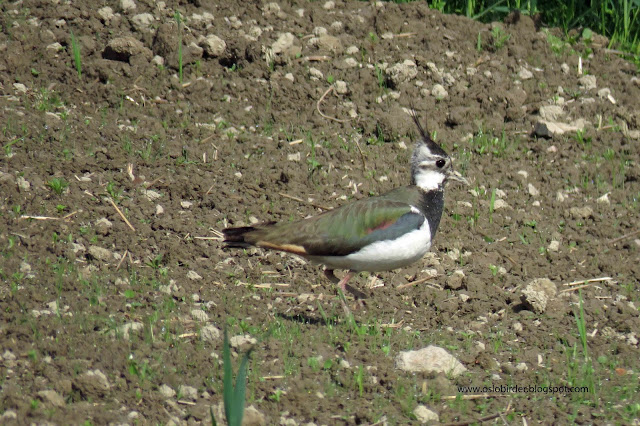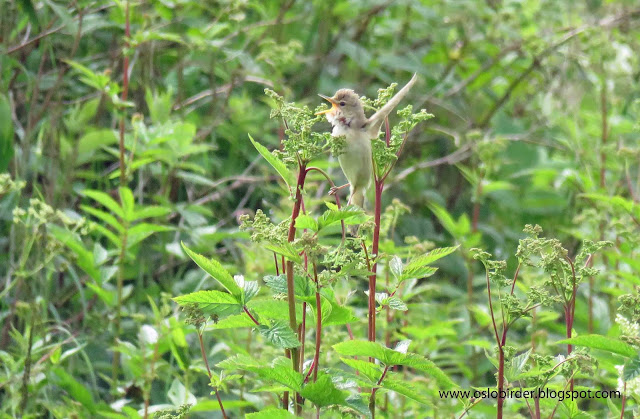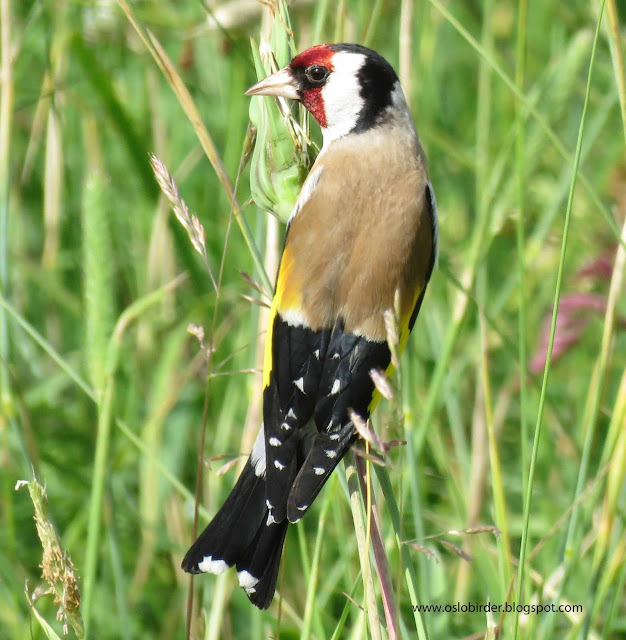Maridalen deserved a visit today and it gave me a chance to check up on some of the breeding birds. This season seems to have been a good one for many birds. We have had a hot May and June with little rain and many birds seem to have prospered due to this. Tits seem to have had a good breeding season with many fledged young to hear and warblers and flycatchers are taking food to young in the nest. This year also looks to be a good one for butterflies.
I didn’t have the courage to visit the mystery (for me at least) acro warblers at Nes but instead got to grips with those at Kirkeby where it looks like there is a breeding pair in vegetation along a stream and an unpaired male who was singing for full in the middle of the morning and moving around the area. When he came too close the breeding male then the breeding male answered with a short burst of song.
The water level in the lake has risen after a couple of days of heavy rain and the Lapwings no longer have any mud to feed on. The family of four had now moved about 100 metres onto a newly sown field bordered by a field of corn where they could hide if necessary. They only had the adult female looking after them but all four are now so large that they are looking like Lapwings and will hopefully fledge. With all the dangers they face this shows what good parents they have.
They have moved over 600 metres from the nest to get to the water, having to cross a road, go round a farm and through lots of dense and high vegetation. There are cats, foxes and Goshawks in the area plus people, tractors and cars. I don’t know how it is going with any of the other pairs but hopefully there were some other adults who were as good as these ones such that even more youngsters will survive to fledging and help maintain the population in the valley.
I had three singing Common Rosefinches including two red males in the same area with one male chasing the other away suggesting that there was a breeding pair with another unpaired male trying to get in on the act.
The Goshawk nest now revealed itself to contain three youngsters of which one is a lot larger than the other two and suggests that dad has struggled to bring enough food and that the oldest youngster (who is presumably also a larger female) has got more food than the other two.
The Black Woodpecker nest still has no youngsters hanging out of the hole but nearby a couple of newly fledged Great Spotted Woodpeckers were looking for food.
Apart from the Goshawks I didn’t have any raptors and have still to see Honey Buzzard and Hobby in Oslo this year. I wonder if there will suddenly be a number of records of both this species in August as there was last year.
A short video of a singing Marsh Warbler (you get to see him will after about 40 seconds) plus a recently fledged Great-spotted Woodpecker with a very vivid scarlet crown.










Simon Rix
Simon Rix is an English Birder who has lived in Oslo, Norway since 2001. Birding has been his passion since primary school and after an education as an economist and career within oil and gas and then drinks industry he turned his attention full time to birds as middle age approached. He is particularly interested in patch birding and migration and is an active guide, blogger and photographer. He is a member of the Norwegian Rarities Committee (NSKF).
Leave a Reply